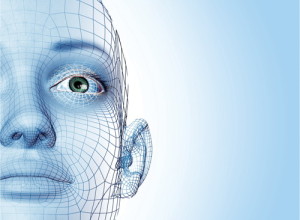Computational geometry has recently benefitted from the interaction between mathematics and computer science. The results are applicable in areas such as motion planning, robotics, scene analysis, and computer aided design.
 Computational geometry is a division of computer science dedicated to the study of algorithms which can be explained in terms of geometry. Some are purely geometrical problems which arise due to the study of computational geometric algorithms and they can also be considered to be part of computational geometry. The modern computational geometry is quite a recent development but it is one of the oldest fields of computing with its history stretching back to ancient times. Computational intricacy is vital to computational geometry, with great practical importance if algorithms are used on very large datasets containing tens or hundreds of millions of points. The progress in computer graphics and computer-aided design and manufacturing (CAD/CAM) led to the development of computational geometry but many problems in computational geometry are traditional in nature which crop up from mathematical ideas.
Computational geometry is a division of computer science dedicated to the study of algorithms which can be explained in terms of geometry. Some are purely geometrical problems which arise due to the study of computational geometric algorithms and they can also be considered to be part of computational geometry. The modern computational geometry is quite a recent development but it is one of the oldest fields of computing with its history stretching back to ancient times. Computational intricacy is vital to computational geometry, with great practical importance if algorithms are used on very large datasets containing tens or hundreds of millions of points. The progress in computer graphics and computer-aided design and manufacturing (CAD/CAM) led to the development of computational geometry but many problems in computational geometry are traditional in nature which crop up from mathematical ideas.
The essential applications of computational geometry:
Robotics – It is one of the branches of mechanical and electrical engineering and computer science that connect with the design, construction, operation, and application of robots and computer systems for their controlling, giving sensory feedback, and information processing.
Geographic information systems – It is a system designed to capture, store, manipulate, analyze, manage, and present all types of spatial or geographical data. The acronym GIS is also used for geographical information science to imply the academic discipline or career within the broader academic discipline of Geo-informatics.
Integrated circuit design – It is a set of electronic circuits on a small plate or chip made of silicon usually which is a semiconductor of electricity. This can be made much smaller than a distinct circuit made from independent electronic mechanism. ICs can be compressed, having up to several billion transistors and other electronic components in an area which is the size of a fingernail.
Computer-aided engineering- It is the broad usage of computer software to aid in engineering study tasks including Finite Element Analysis (FEA), Computational Fluid Dynamics (CFD), Multibody dynamics (MBD), and optimization. The tools that are developed to support these activities are considered CAE tools which analyze the robustness and performance of components and assemblies.
Computer vision- It is a field that includes methods for acquiring, processing, analyzing, and understanding images and high-dimensional data from the real world in order to produce numerical or symbolic information. It helps to duplicate the abilities of human vision by electronically perceiving and understanding an image. It is also the enterprise of automating and integrating a wide range of processes and representations for vision perception.
The GD&T program at CADD for engineers imparts you a thorough understanding of the Dimensioning specifications which defines the nominal, as-modeled or as-intended geometry of parts and tolerancing specifications which defines the allowable variation for the form and possibly the size of individual features and allowable variation in orientation and location between features. The upcoming designers can use symbolic language on engineering drawings and computer generated 3D solid models to explicitly describe nominal geometry and its allowable variations. The program thus further emphasizes the broad usage of computer software to aid in engineering study tasks combining the elements of mathematics and computer science. To know further please visit our website.
https://www.caddcentre.ws/geometric_dimensioning_tolerancing_course.php
